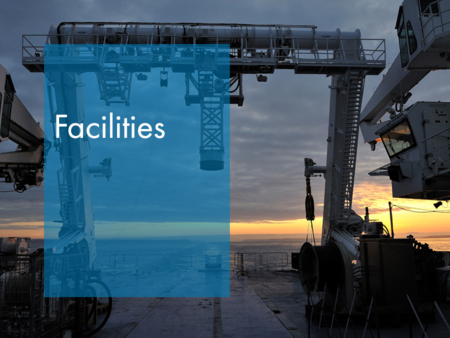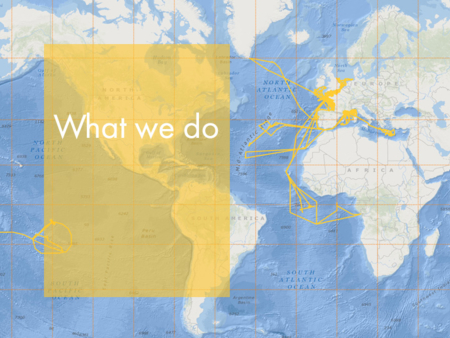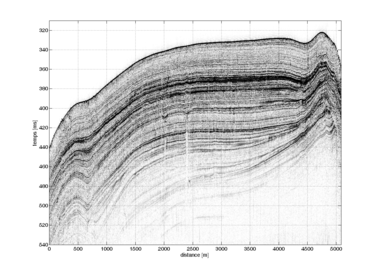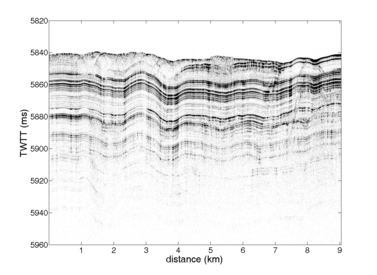The sub-bottom profilers of the vessels Pourquoi pas ?, L’Atalante and Thalassa
The sub-bottom profilers of the deep-sea vessels Pourquoi pas ? (2005), L’Atalante (2009) and Thalassa (2017) are the result of a low-frequency development undertaken in 1998–99 by the companies Triton-Elics, Eramer and Enertest, in collaboration with IFREMER as part of the modernization of the research vessel Suroît. Currently, the acoustic array and electronics (power, adapting, receiving, switching) of the profiler are marketed by the company Ixblue. These sub-bottom profilers constitute a homogenous equipment pool supported by the acquisition system SUBOP.
The transmitting and receiving acoustic array comprises Tonpilz-type transducers and is built into the hull. It is protected by an acoustically transparent window. The array’s geometry may change depending on the vessel concerned: seven elementary electroacoustic transducers with specific arrangements on the vessels Pourquoi pas ? and L’Atalante, and five transducers for the Thalassa. Enjoying significant levels of transmission (~210 dB ref. 1 µPa at 1 m), these profilers can be deployed in waters with a maximum depth of 4,000–5,000 m, depending on the sediments present. Depth of penetration can attain 100 m in loose sediment and vertical resolution is approximately 25 cm.
Examples of profiles on average and very high water levels
SBP profile at depths of 250–300 m
~120 m penetration
Characteristics
- Electronics: Ixblue PWM 4 kVA
- Water height: 20–5,000 m
- Penetration: ~100 m in loose sediment
- Vertical resolution: ~25 cm
- Transmission level: between 209 and 212 dB ref. 1 µPa at 1 m depending on the geometry of the array
- Signal: Chirp 1500–6500 Hz from 10 to 100 ms






